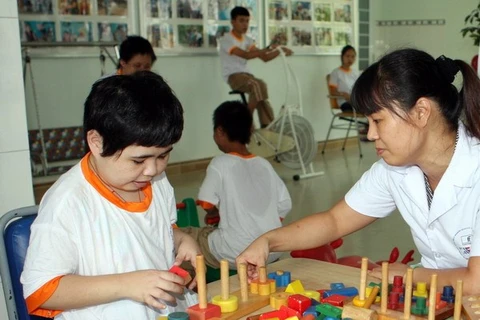Hanoi (VNA) – The Vietnam Friendship Village, set up 20 years ago, has contributed to ease the pain for Agent Orange (AO)/dioxin victims by giving nursing services and vocational training to AO-infected veterans and children.
The Vietnam Friendship Village, which is run by the Vietnam Veterans’ Association, was formed on March 18, 1998. It covers over 3 hectares in Van Canh commune, Hoai Duc district of Hanoi.
It is a symbol of international solidarity for peace and friendship. The village was built with cooperation of six countries – the US, Germany, France, Japan, Canada and the UK following the initiative of George George Mizo, a US war veteran who joined the war in the south of Vietnam.
The construction was funded with over 2 million USD from the Friendship Village International Committee and the Vietnamese Government.
After 20 years of operation, the village welcomed over 6,500 war veterans, former youth volunteers who are AO/dioxin victims and 700 children of the second and third AO victim generations.
The veterans and former youth volunteers receive treatment and nursing services and have chances to join cultural and sport activities as well as visits to different places and convalescences.
Meanwhile, almost children adopted by the village are living with disabilities, especially intellectual disability due to the toxic chemical. Along with rehabilitation, they are provided with education and vocational training such as IT, embroidery, tailoring and making fabric flowers. Many of them have managed to find jobs and earn money. The most important thing is that they can integrate into society without a complex about their disabilities.
Each year, the Friendship Village International Committee provides financial assistance for the village. The village has become a venue for international friends who wish to meet and assist the victims.
With its efforts and achievements over the past 20 years, the village was honoured with the first class of Labour Order and certificates of merit from the Government and the Party Central Committee’s Commission on Information and Education.
In the coming time, the village aims to become a model in humanitarian and charitable activities, a destination of friends at home and abroad as well as a symbol of solidarity, peace, friendship, cooperation and reconciliation.-VNA
VNA
























